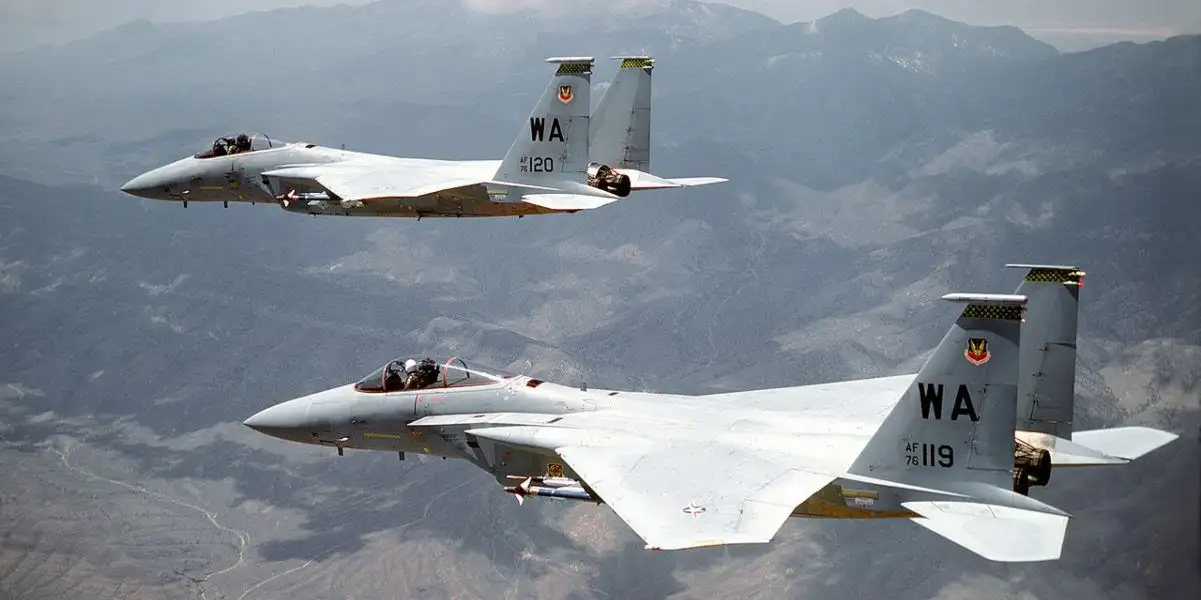The glide ratio
According to Globeair.com, the glide ratio measures the aerodynamic efficiency of an aircraft in a no-engine glide. It shows how far an aircraft can go forward for each altitude unit lost.
It measures how well an airplane can translate altitude into distance without using its engines. This concept is also important for powered aircraft, especially when an engine failure forces a glide to safety. It is also essential for the design and performance assessment of gliders.
The F-14 pilot who glided his Tomcat from 54,000ft to 33,000ft
John Chesire, former US Navy F-4 Phantom II and F-14 Tomcat pilot, explains on Quora;
‘All aircraft have what is known as a “glide ratio,” even heavy fighter aircraft like my old F-4 Phantom II.

‘I once had a dual flameout in my F-14 at around 54,000ft/19,459m. I could not attempt an engine restart until I glided down to the restart envelope which, as I recall was around 33,000ft/10,058m. It was a very long glide, and also very quiet with no engine noise while getting down. Thankfully, both engines then started right up and I flew back to base.
‘It was a many vs. many, F-14s vs. F-15s DACM exercise, Air Force against the Navy… and great fun! Both aircraft were new at the time and this exercise was very, ‘unofficial’. It was done quietly between two squadron COs and without higher authority’s knowledge or approval.
‘I got on an F-15 ‘s tail, and he went way up in the vertical, which they liked to do. Of course, we were not supposed to fly above 50,000 feet but I was looking at him instead of my altimeter, although I knew were “way up there.” (My RIO later said we topped out just above 54,000 feet). As the F-15 ran out of airspeed above me and started coming back down, I pulled a little too hard on the stick and at a dwindling airspeed myself to cut him off early by pulling lead at the top of “the tactical egg”* to get a shot on him.’
A slow and long glide
He continues;
‘In an F-4, my engines would have been fine. But with the notorious TF30, they flamed out as I increased angle-of-attack up in that rarified air.
‘It wasn’t so bad. With that problematic TF30 engine, I had a single engine failure due to engine stalls many times before and I never had any problems restarting them, so I was comfortable that they would start once I glided down. It was a slow and long glide, and actually slightly relaxing following the high-G exercise I was in when the engines both quit.
‘The wings went forward automatically with their inputs from the CADC (Computer Air Data Computer) based upon speed.
The F-14 pilot who glided his Tomcat for 21 minutes
‘Even though the engines had failed they still provided enough hydraulic power by windmilling in the dive to move the wings forward. We also had a backup hydraulic pump if needed, which it was not in this instance. And for electrical power, we had an external ram-air-turbine generator (RAT). This was like a little propeller that popped out into the airstream and spun rapidly, thus providing emergency electrical power.
‘My RIO was making too much noise. He broadcasted, “Mayday, Mayday, November Fox 101 is going down.” Since it was a large exercise, the radios were jammed with other aircraft wanting information. I was upset because I knew we were not in serious trouble yet, unless the engines did not restart later. But there was not much to do gliding from 54,000 feet down to 33,000 feet.’
Chesire concludes;
‘At about a 2,000 feet per minute glide it would take us 21 minutes to glide down to restart altitude. (But I went a little faster.)’
Photo by U.S. Navy and U.S. Air Force

